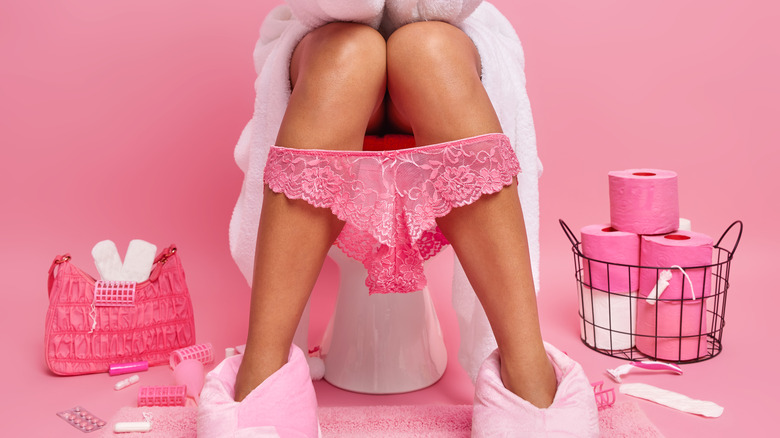Do Period Underwear Actually Work?
Menstrual care has evolved a whole lot over the years. From basics like pads and tampons to the still relatively new menstrual cups, modern and forward-thinking health companies are hard at work in efforts of helping women get through their menstrual cycles with as much ease as possible. One of the latest advancements is period panties. It's likely you've seen advertisements for period panties floating around social media, but understanding how they work might still be a mystery.
In short, period panties aim to absorb blood from your menstrual cycle sans the diaper-like feeling of pads or the invasiveness of tampons and cups. Ob/Gyn Karmon James told Cleveland Clinic that they can hold around 1 to 2 tampons worth of flow. Typically, period panties are made from an absorbent material such as microfiber polyester, and have built-in moisture barrier layers that trap the blood while also keeping you dry, preventing leaking, and — for some brands — controlling odor.
Finding the best period panties for you
If you're thinking about trying period panties for the first time, Dr. James said to test them out on a day when your cycle is light and you have nothing to do but chill at home (per Cleveland Clinic). That way, you'll be less uncomfortable if the fit isn't quite right or you have a leak. She also recommends trying a few different brands before stocking up. Taking into consideration factors like online reviews and different types of absorbency is super important.
While your body is the first priority, one really cool reason to start using period panties is sustainability. Menstruating women use up to 15,000 pads and tampons over a lifetime, so making the switch considerably helps reduce waste. Not only are you saving the environment, but you're saving major moo-lah since you don't have to keep buying more. (One pair lasts between 2 to 5 years!) Depending on the heaviness of your flow, you can wear a pair for up to 12 hours and could use 5 to 7 pairs per cycle. Period panties can also be used for urinary incontinence, discharge, and postpartum bleeding.
Period panties can be washed by hand or in the machine on the gentle or delicate cycle. Just wash them on their own with unscented, dye-free detergent, and don't use fabric softener or fabric sheets. In fact, letting them air-dry is best.


